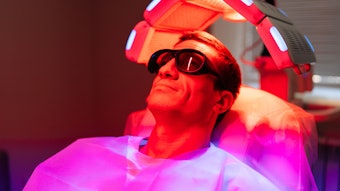
Researchers from the Drexel University College of Medicine have established a clearer relationship between Staphylococci bacteria and the conditions atopic dermatitis (AD) and eczema. AD can be caused by a genetic abnormality in relation to the fillagrin gene of the environment in relation to bacteria. The presence of Stephylococcus aureus in AD was reported many years ago; however, the relationship is not well understood.
The researchers' goal, as reported in a Jan. 22, 2014, article in JAMA Dermatology, was to examine the bacteria that produce the biofilms in the lesions of AD and the response of the innate immune system to these biofilm occlusions of the sweat ducts by specifically evaluating toll-like receptor 2. To do this, they processed routine skin swabs from lesional and nonlesional skin from 40 patients with AD and performed scrapings and biopsies. They also obtained 20 samples from controls (10 inflamed skin samples and 10 normal skin samples).
All AD-affected samples contained multidrug-resistant staphylococci, with S. aureus (42.0%) and Staphylococcus epidermidis (20.0%) as the predominant species. All isolates were positive for extracellular polysaccharide and biofilm (85.0% strong biofilm producers and 15.0% moderately to weakly positive). Polymerase chain reaction revealed the biofilm-mediating icaD (93.0%) and aap (12.5%) genes in the isolates (some contained both).
The researchers examined tissues for microbial identification, extracellular biomass formation, biofilm formation, and staphylococcal biofilm in skin tissues. Occlusion of sweat ducts with periodic acid–Schiff–positive and Congo red–positive material was noted on microscopic tissue examination.
Toll-like receptor 2 was shown to be activated in AD lesional skin (immediately proximal to the sweat ducts), which likely led to the initiation of proteinase-activated receptor 2–mediated pruritus and MyD88-mediated spongiosis.
The researchers concluded that biofilm formation by AD-associated staphylococci almost certainly plays a major role in the occlusion of sweat ducts and leads to inflammation and pruritus. the author's hypothesized that the environmental hit in AD relates to staphylococci and their biofilms, which occlude sweat ducts.










